Why smart robots should be as lazy as possible
Alongside René van de Molengraft, Professor of Lazy Robotics and founder of Tech United, we dive into the technology behind the RoboCup.
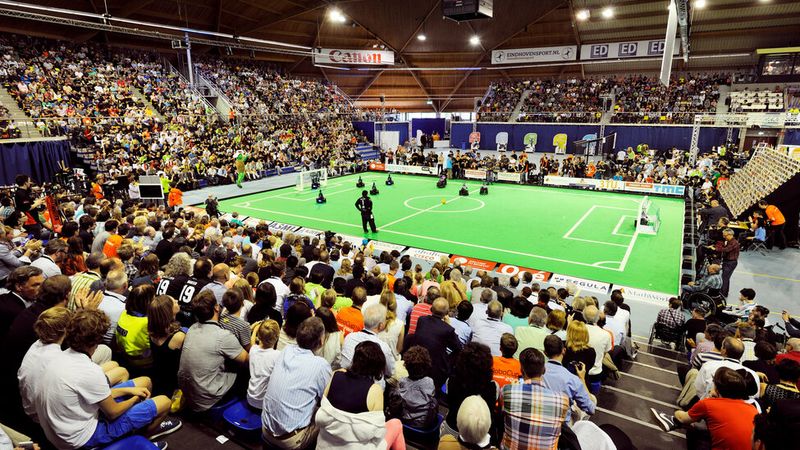
Tech United is the defending champion in the Middle Size League of the RoboCup, the most spectacular robot soccer. They have already been the world champion seven times. Photo: Bart van Overbeeke
This article was first published on
www.tue.nlThe European Championship is still in full swing but, at TU Eindhoven, they are already hard at work on the next ‘soccer tournament’, the RoboCup 2024 from July 17-21 in Eindhoven. This is the world championship for robotics and involves fully autonomous robots that play soccer matches, perform household tasks or locate difficult-to-reach places as part of rescue work.
Thousands of people are expected to visit Eindhoven for RoboCup 2024, the world’s largest competition in robotics and AI. The best teams from around the world will compete for the world title in various robot competitions.
Alongside René van de Molengraft, Professor of Robotics and co-founder of the successful TU/e team (and current robot soccer world champion) Tech United, we look ahead to the robot soccer tournament.
A conversation about the latest wonders we can see there, the challenges on the way to achieving the grand goal of defeating human soccer players by 2050, and why soccer robots – and robots in general – perform even better when they are lazy.
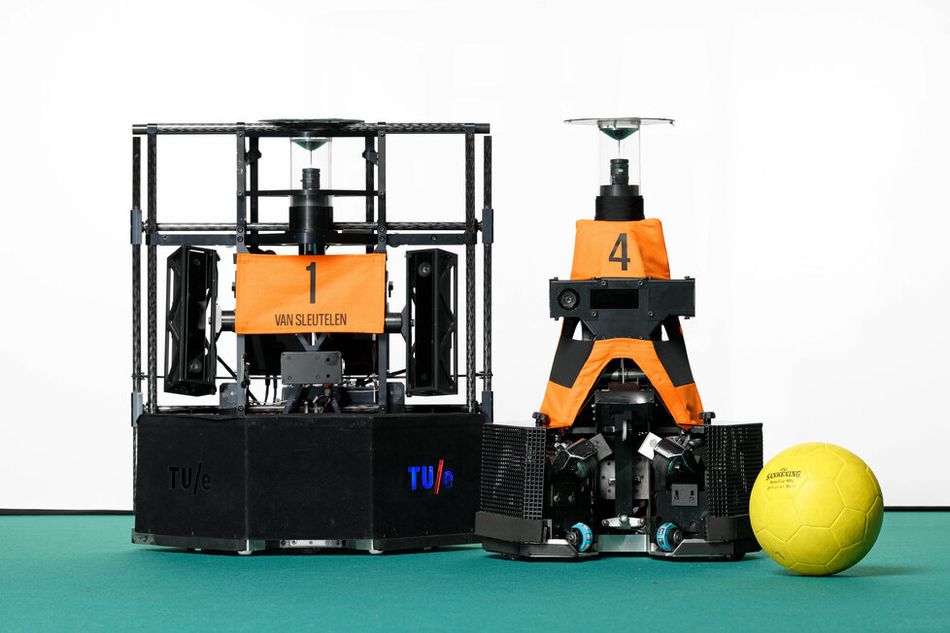
Tech United team
The soccer robots of TU Eindhoven’s team, Tech United, compete in the Middle Size League (MSL), the most spectacular robot soccer. Their healthcare robot, HERO, takes part in the @Home league.
Soccer robots are attracting a lot of attention, especially in the MSL. Using a real soccer ball, they play five-on-five matches in two 15-minute halves on an 18 x 12-meter field. They are programmed in advance but, once the whistle blows, they play soccer completely autonomously and humans are simply spectators.
They look like a sort of moving traffic cone on three omni wheels. These wheels cannot steer but can passively roll sideways. Thanks to these wheels, the robots are highly maneuverable and reliable.
The latest wonders
RoboCup primarily serves to stimulate the development of technology in mechatronics, computer science, electronics and AI, among other fields, with competition as the drive. After each tournament, the knowledge and progress are therefore shared with all participants. So, Tech United will have to come up with something new this year to go for its eighth (!) world title.
“We’re introducing two new elements this year,” says Van de Molengraft. “The first improvement concerns the wheels. This year, we have a player with three steerable wheels. This allows the robot to accelerate and brake much faster. For now, it will be used as a substitute to see if the robot can handle an entire tournament.”
“The other improvement is invisible as it relates to the software. We have completely recreated old code from the very beginning and have adapted it to the rest of the code. This code improves the robots’ movements and therefore basically all soccer actions.”
In this episode of Tiki Taka Touzani, presentor Soufiane Touzani and soccer player Ismael Saibari (PSV) visit team Tech United and show that humans can still play the robots out now. Source: NPO3 / Tiki Taka Touzani
Defeating human soccer players
Every few years, the RoboCup organization, in which Van de Molengraft is closely involved, draws up new rules for the various leagues. In doing so, they encourage innovations to get closer to the dot on the horizon: defeating a human soccer team by 2050. What will the next challenge be on the way to 2050?
We need the switch from wheels to legs to win against people.
René van de Molengraft, Professor Robotics
“I’m thinking of the switch from wheels to legs. We will have to do that because we really cannot compete against humans using wheels yet. For that, we need to allow games with multi-legged robots in the MSL. That would be an enormous new challenge for Tech United,” he explains.
“Of course, you will then see a huge drop-off in match results,” says Van de Molengraft. “But eventually, the robots on legs are going to win out over those on wheels. I’m really looking forward to that!”
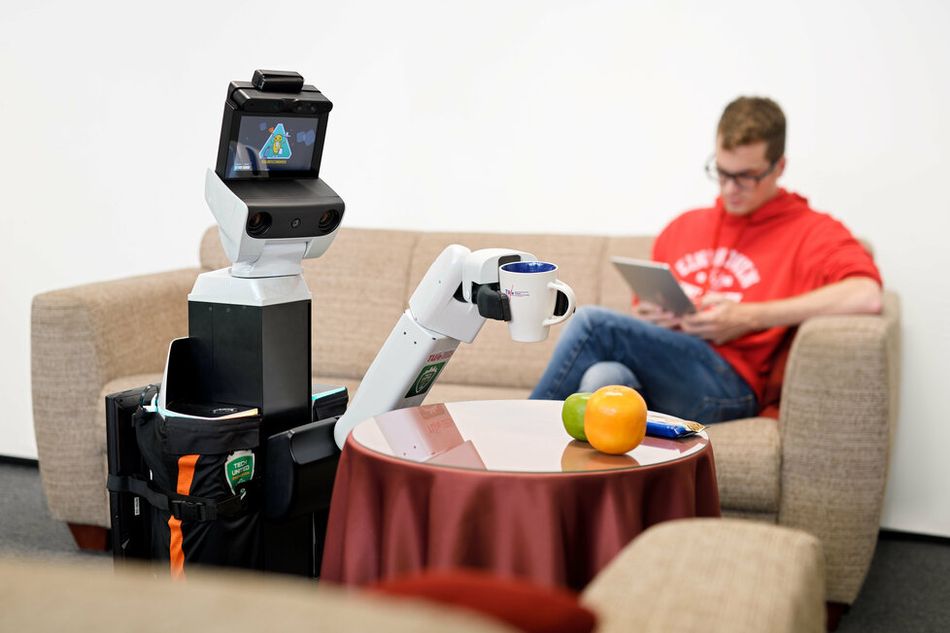
Practical challenges
In addition to the soccer leagues, the RoboCup has other categories in which to compete, such as autonomous healthcare robots and rescue robots. For example, Tech United is participating in the @Home league with their healthcare robot HERO.
Within this competition, the focus lies in the development of robots that can provide service and assistance in home or care situations. In the future, the hope is that this will enable elderly people to live at home for longer, for example. Here too, the team is mainly a spectator during the matches.
At the RoboCup, practical challenges are at the center of the care and rescue leagues.
René van de Molengraft, Professor Robotics
“You can see that highly practical challenges are at the center of the other leagues, such as picking up a cup of tea. The care robot has to know how big the cup is and how full it is, but also what material such a cup is made of. A plastic cup is easily crushed, resulting in hot tea everywhere. I see significant progress there, although the step to practice is still sizeable.”
“It’s a different story for rescue robots. Robots are already being deployed in rescue work in which humans are difficult to reach or where it is too dangerous. Examples include the disaster at Fukushima or the earthquakes in Turkey and Syria.”
“It’s really great to see rescue robots finding living people in incredibly difficult conditions, albeit usually still requiring a human operator to remotely control the robot.”
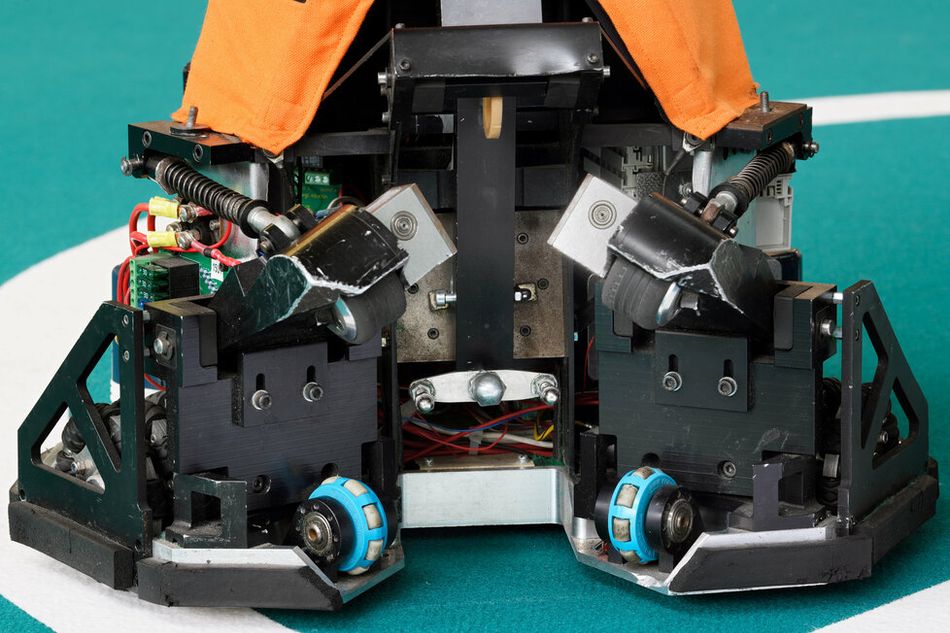
At the heart of the research
The TU/e team Tech United has been around for almost twenty years now. Van de Molengraft was involved in the foundation of the RoboCup soccer team, taking inspiration from Philips’ then-successful team. A little later, in 2009, followed the start of research into autonomous robotics at TU/e with the RoboEarth project, which had European funding.
“After that, we started carrying out more and more robotics projects and became a real research group. In 2019, as principal investigator, I was able to start my own robotics group,” he says.
“We began with five people and are now a real section with about fifty employees and a number of robotics courses in the Mechanical Engineering bachelor’s program. And, starting next academic year, we will also have our own Robotics master’s track.”
All of that research directly benefits the Tech United team as, in addition to students, the team consists of PhD candidates and staff.
Intelligent laziness
As of this month, Van de Molengraft may call himself a Professor of Lazy Robotics. By ‘lazy robots’, he means robots that intelligently recognize which information they can safely ignore. “Normal robots, such as self-driving cars, consider all of the information around them to be equally important. It doesn’t work that way with humans,” explains Van de Molengraft.
“Humans are perfectly capable of ignoring, for instance, visual information that is not important to a task.”
“Imagine yourself on a bicycle. You perceive all of the information that you do not require for safe participation in traffic, but you don’t store that information. That person walking out of the supermarket you’re cycling past: unimportant!”
“A self-driving car cannot do that yet. It has 20 cameras running simultaneously, viewing and analyzing each image. Everything is equally important, which takes a lot of computing power and a lot of energy. That needs to be improved.”
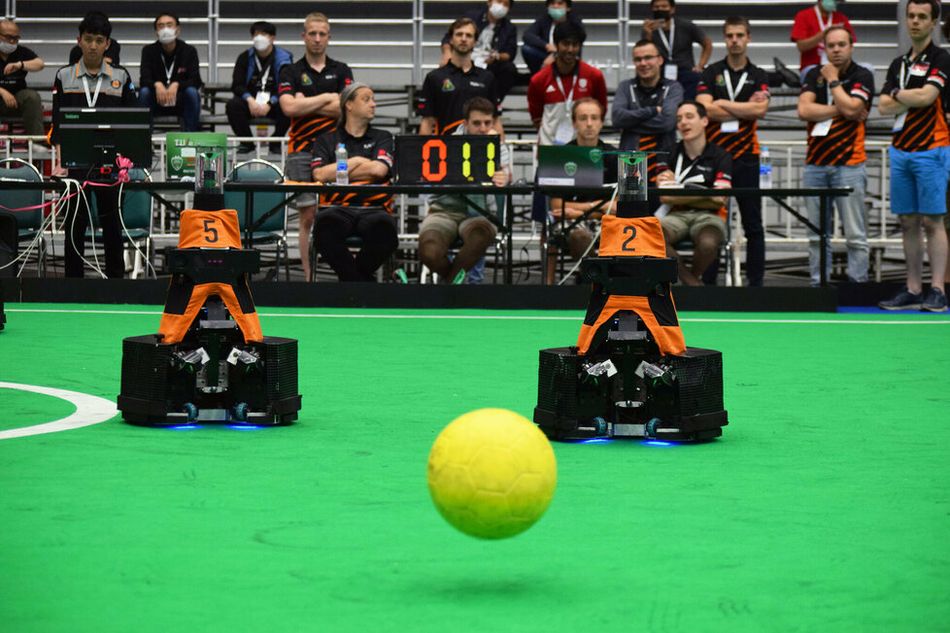
He gives another example: “We humans sit down or lean on a table when we don’t need to move. That costs us less energy. We want the same for robots. They have to become ‘intelligently lazy’, so to speak, and be able to assess which information is highly important for safety or their task and then focus on that.”
“But we still have a lot of work to do to get robots to be as intelligently ‘lazy’ as humans are, both in terms of software and hardware. And that’s what we are working on at TU/e.”
Lazy soccer robots
Van de Molengraft laughs at the question of whether the best soccer robots should therefore be lazy. “Yes, that would certainly help. They wouldn’t always have to drive to the right spot down to the millimeter, for example. They only need to do that when receiving and shooting the ball.”
“When a robot is simply moving freely, a few centimeters don’t really matter. We could make some gains there or do research on that. It does require some real rethinking on our part, but that’s what makes it such a great challenge that, to this day, never bores.”